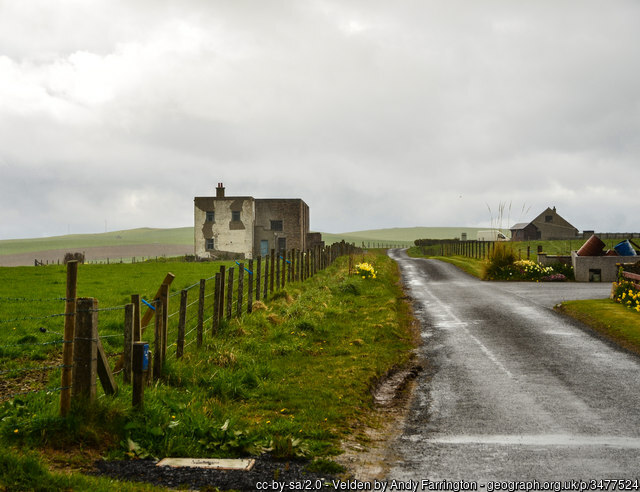Skeabrae
| Also known as: | HMS Tern II / RAF Skeabrae / RAF Station, Skeabrae / Skaebrae (misspelling) / Skea Brae (misspelling) / Skeabrae Aerodrome |
| County: | Orkney |
| Current Status: | Housing / Open land |
| Date: | 15 August 1940 - 1 September 1946; subsequent minor use |
| Current Use: | Disused |
| Used By: | RAF / RAF (Czech) / RAF (French) / RAF (Norwegian) / FAA / RAAF / RCAF |
| Landing Surface Types: | Paved |
| Prominent People: | Colin Gray |
Skeabrae had an unusual start to its life as the site was originally planned as an early naval airfield, complete with four runways, before being switched to Air Ministry supervision for RAF use. The airfield began to open in August 1940 with the primary aim of providing vital fighter defence for the Royal Navy fleet at Scapa Flow. It was however not until October that the first aircraft arrived, Fleet Air Arm Gloster Sea Gladiators and Grumman Martlets of 804 Squadron. A Martlet from this squadron was the first American built fighter to destroy an enemy aircraft in the Second World War on 25 December 1940.
Hawker Hurricanes arrived in January 1941, firstly from No 3 Squadron before being replaced by No 253 Squadron and subsequently the Norwegians of No 331 Squadron. Supermarine Spitfires were used by various squadrons at Skeabrae from 1942 and fighters continued to operate from the airfield until the end of the war. They were joined latterly by some FAA units such as Nos 801 and 880 Squadrons operating Supermarine Seafires. Fighter training also took place at Skeabrae with No 1491 (Fighter) Gunnery Flight, an aerial target towing unit, moving to the airfield at the end of 1942 and staying to August 1943. In addition to fighters, No 1476 (Advanced Ship Recognition) Flight formed at Skeabrae in early 1943, giving instruction for the bombing of moving targets and ship reconnaissance until disbanding at the start of 1944.
The airfield closed on 1 September 1946 after a short period of Care and Maintenance from the autumn of 1945. Skeabrae was finally relinquished in 1957 after being administered since 1947 by the Royal Navy. It was suggested that the airfield could be merged with Twatt to form a large NATO base but Iceland was chosen as a location instead.
Skeabrae was equipped with various hangars and support buildings. Many of these survived until the 1970s and 1980s before larger scale demolition was carried out. The control tower for example was demolished in February 1990. The former cinema/gymnasium and the bomb store are two of the airfield’s few remaining standing buildings but the runways have almost entirely been removed.
- Harray and Sandwick Community Council
Main unit(s) present:
-
No 3 Sqn
-
No 66 Sqn
-
No 118 Sqn
-
No 129 Sqn
-
No 132 Sqn
-
No 164 Sqn
-
No 234 Sqn
-
No 253 Sqn
- No 254 Sqn
- No 312 Sqn
- No 313 Sqn
- No 329 Sqn
- No 331 Sqn
- No 441 Sqn
- No 451 Sqn
- No 453 Sqn
-
No 598 Sqn
-
No 602 Sqn
-
No 603 Sqn
-
No 611 Sqn
-
No 801 Sqn
-
No 804 Sqn
-
No 841 Sqn
-
No 880 Sqn
-
No 881 Sqn
-
No 882 Sqn
-
No 884 Sqn
-
No 887 Sqn
-
No 894 Sqn
-
No 1476 (Advanced Ship Recognition) Flight
-
No 1491 (Fighter) Gunnery Flight
-
No 1841 Sqn
- No 2714 Sqn RAF Regiment
- No 2745 Sqn RAF Regiment
- No 2766 Sqn RAF Regiment
- No 2824 Sqn RAF Regiment
-
Advanced Ship Recognition Flight
Photographs and video from the memorial unveiling at Skeabrae on 16 September 2017:
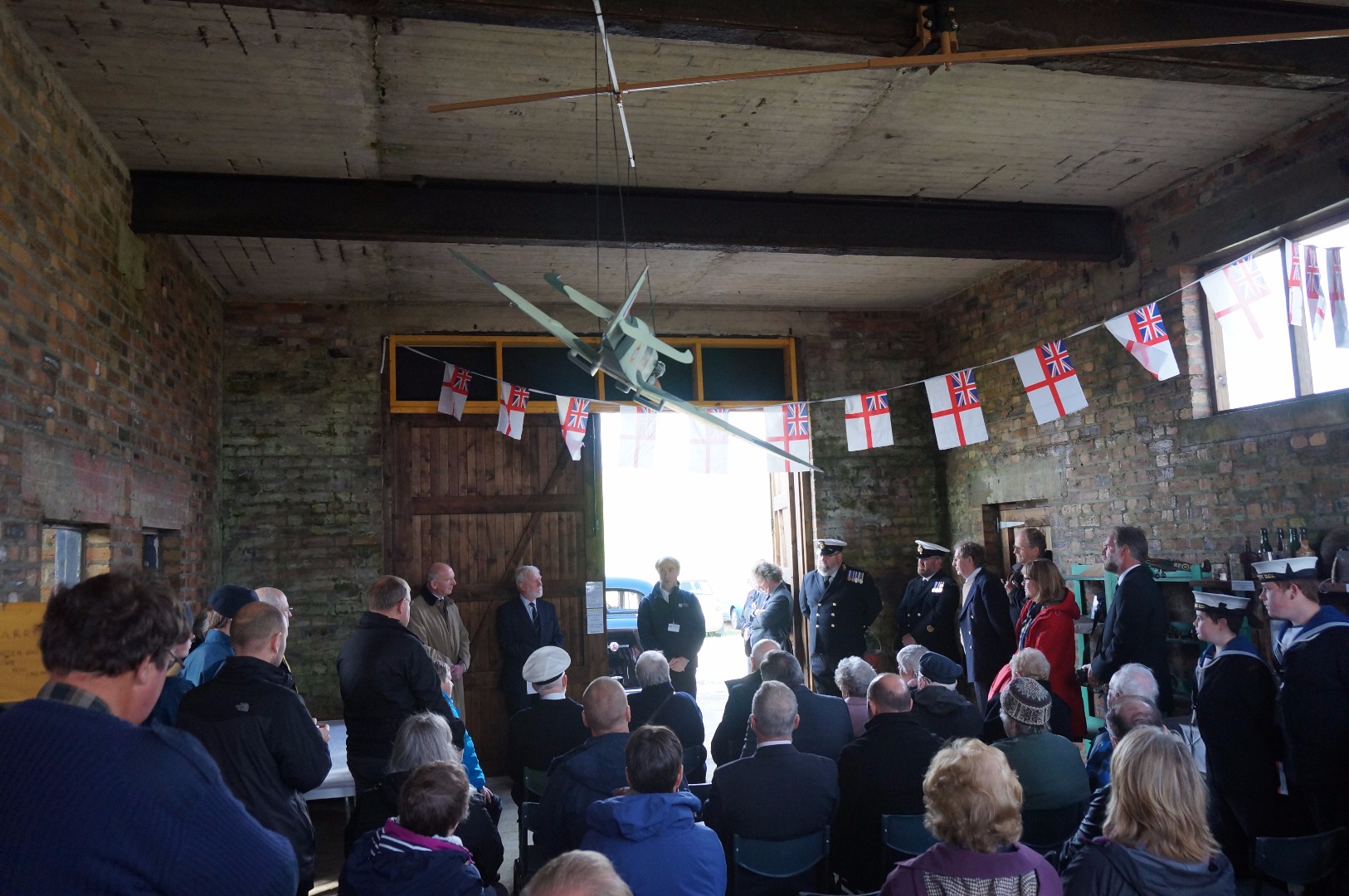
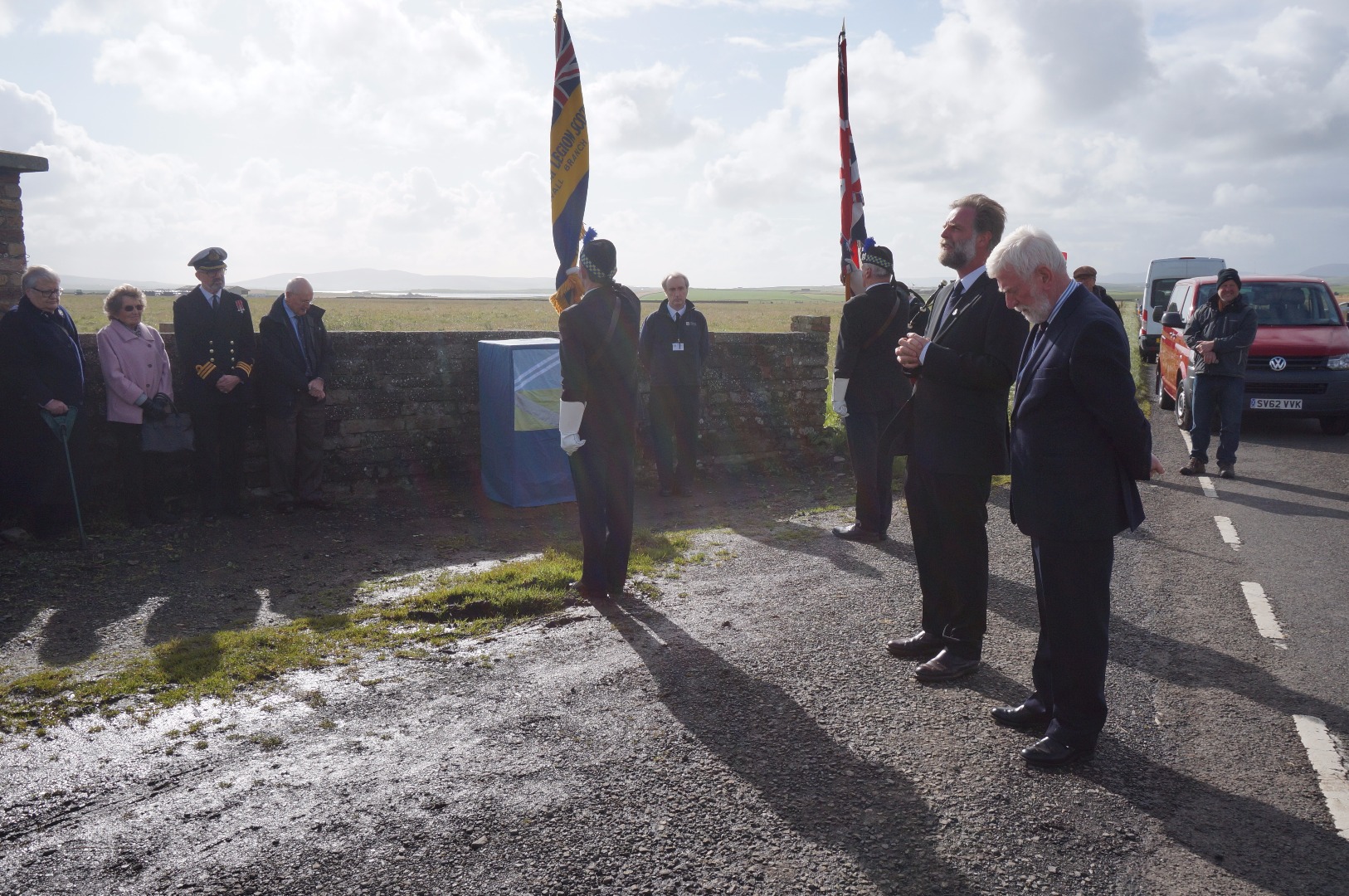
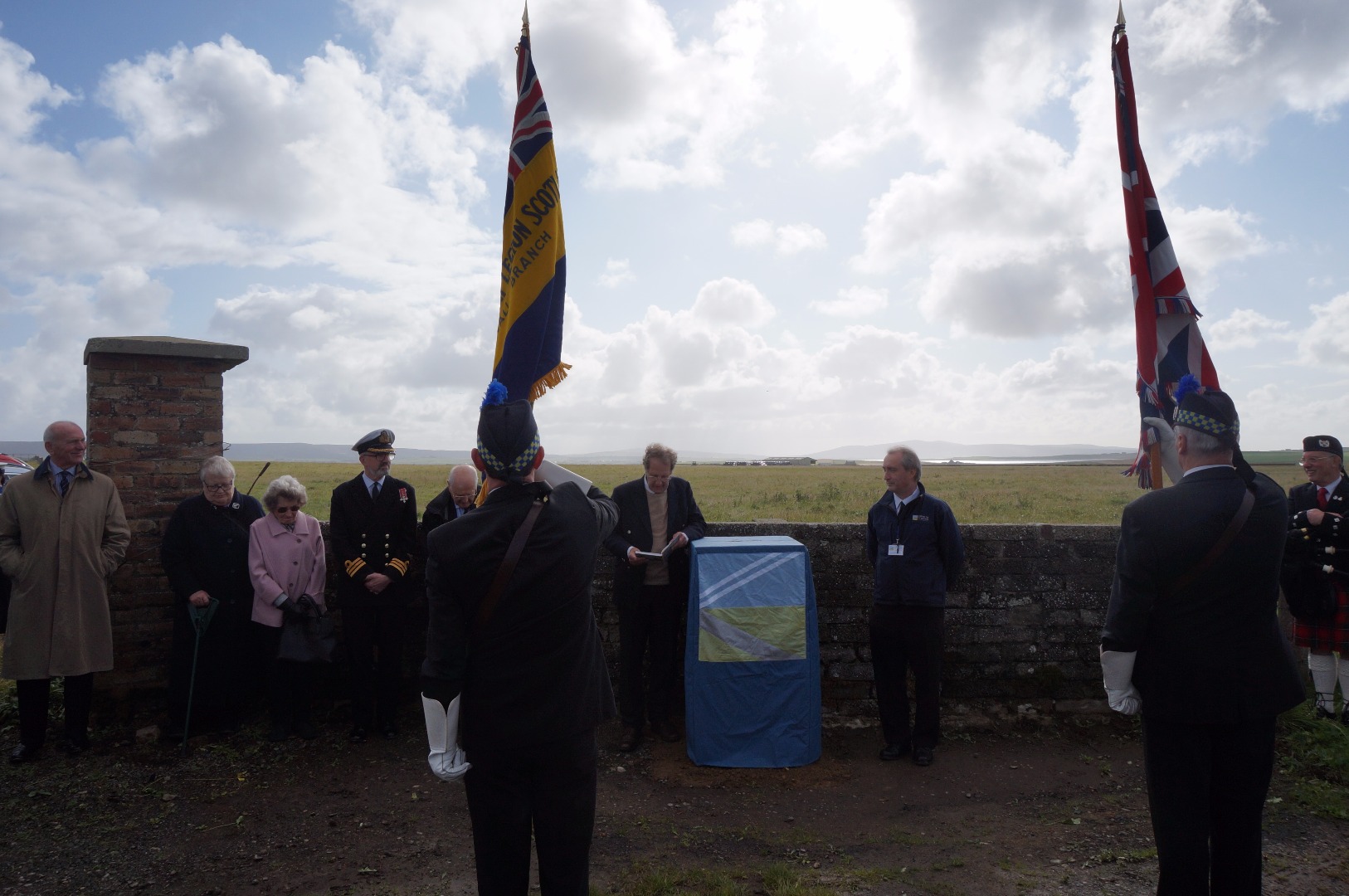

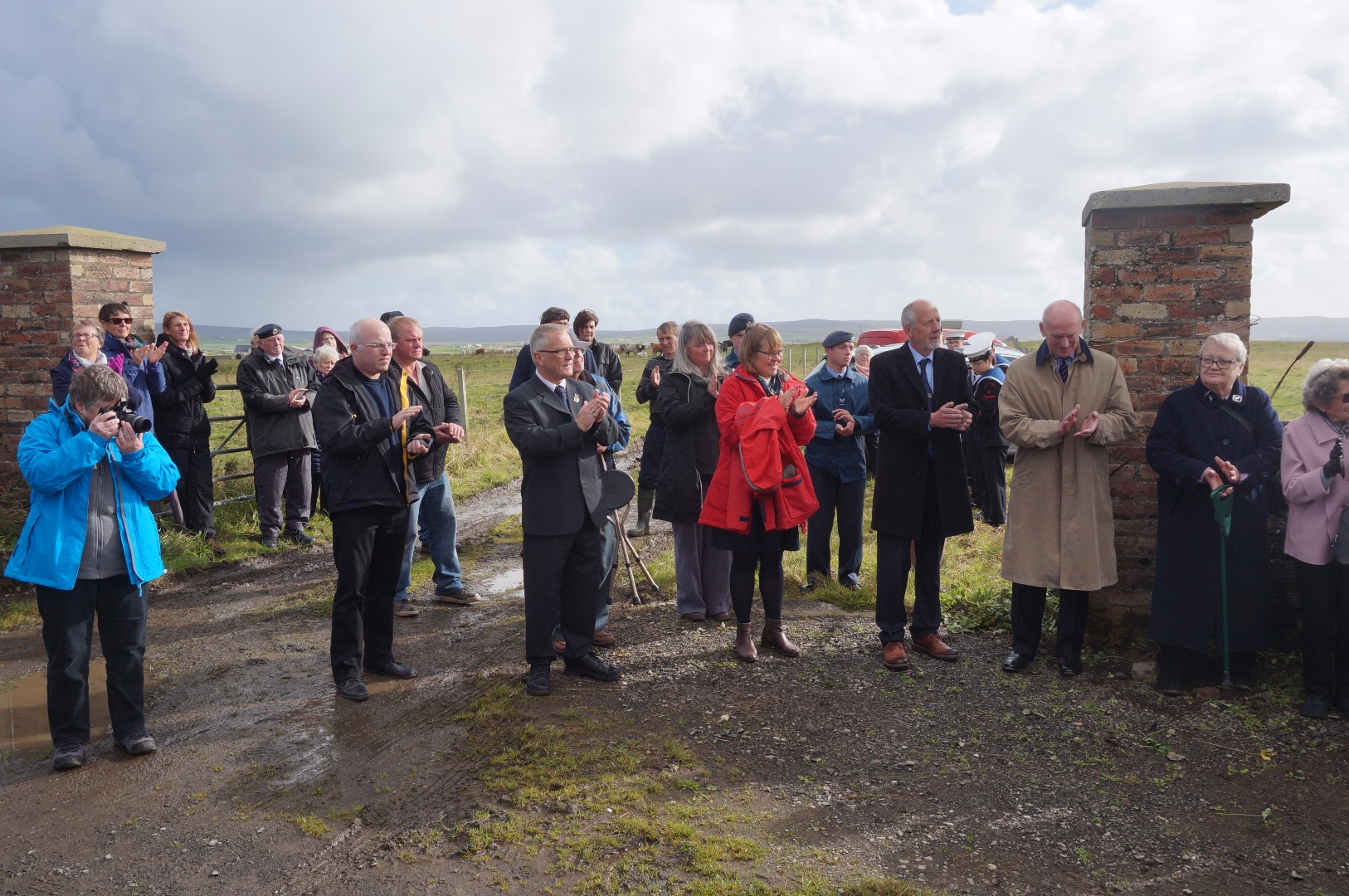
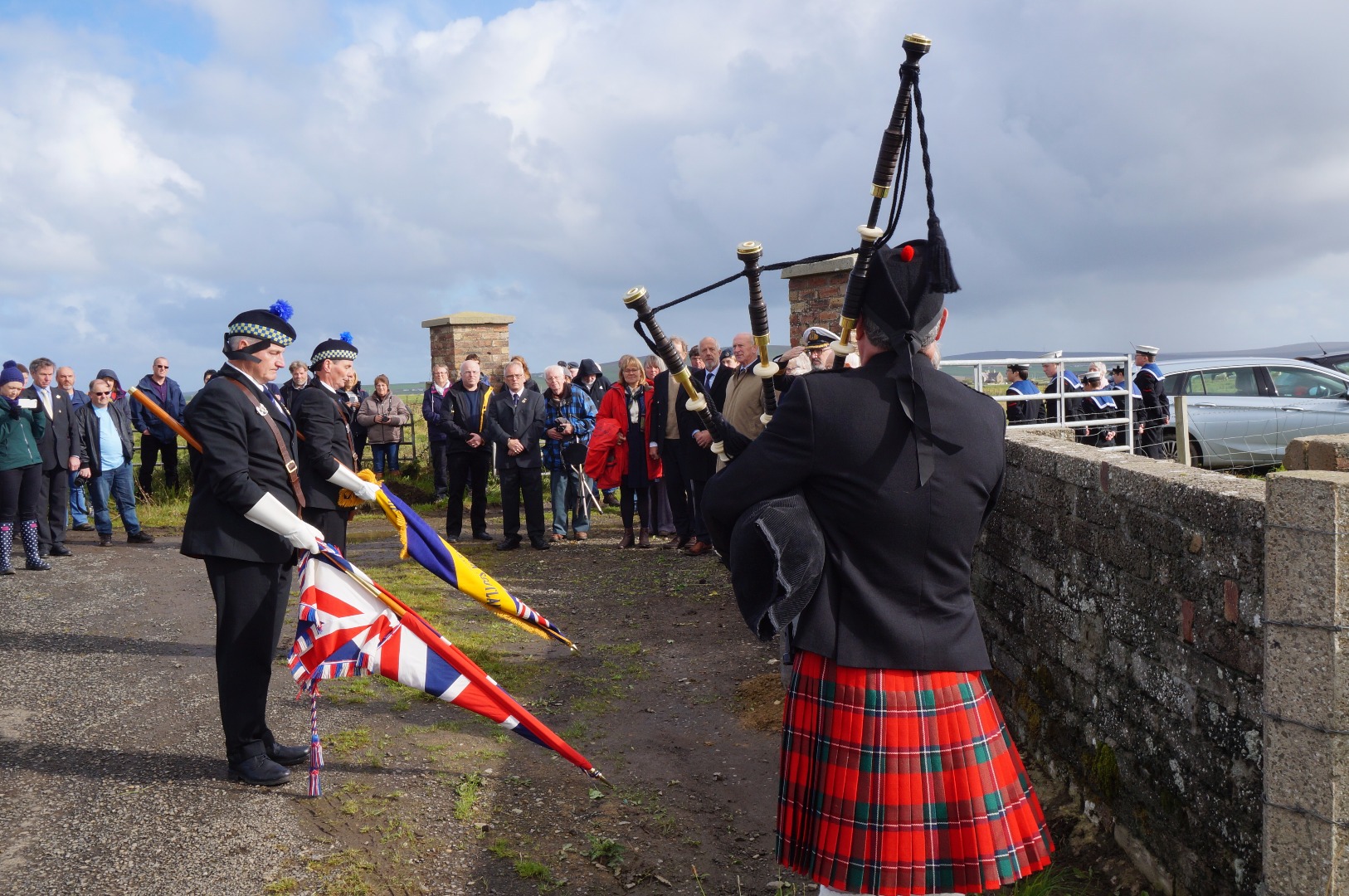

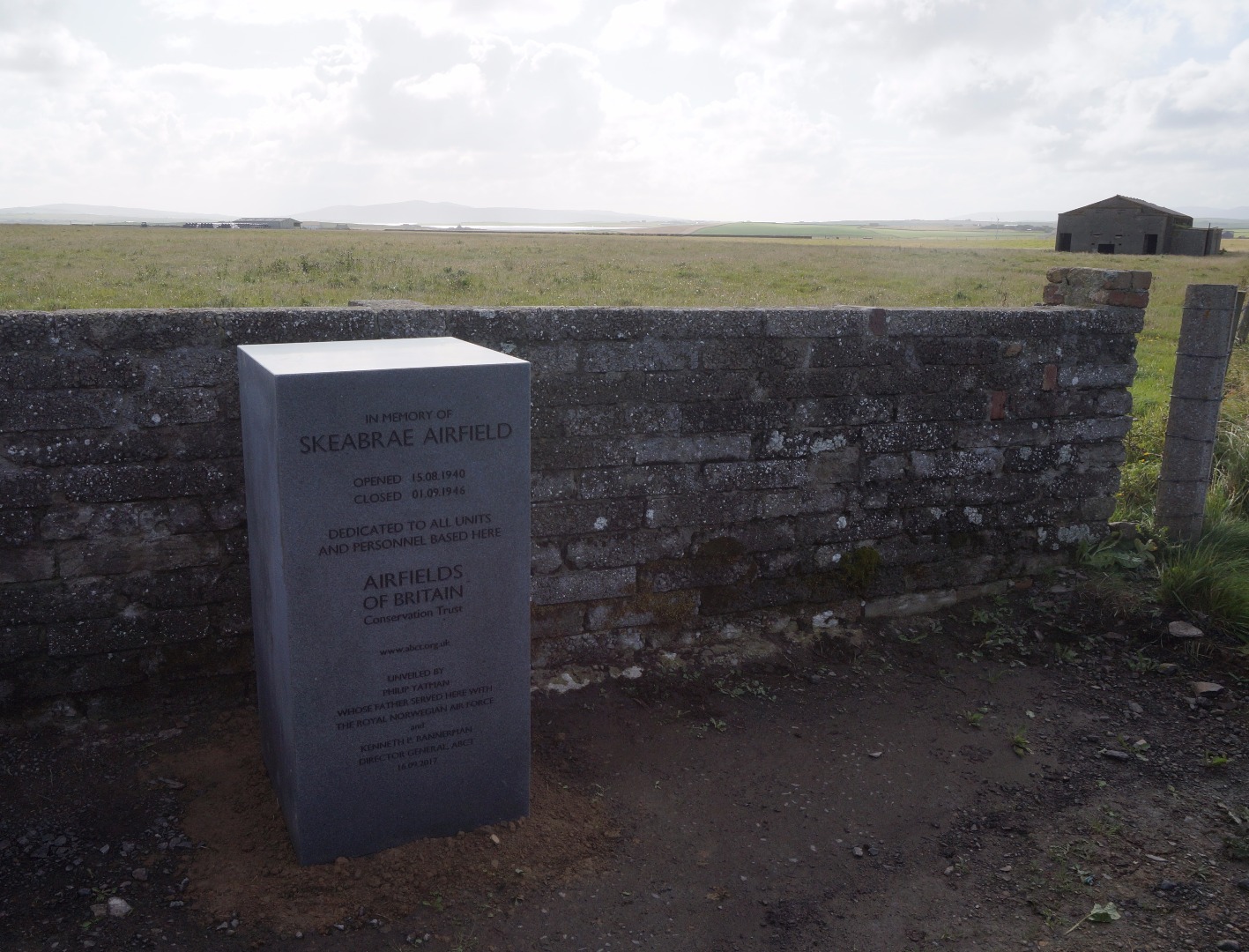
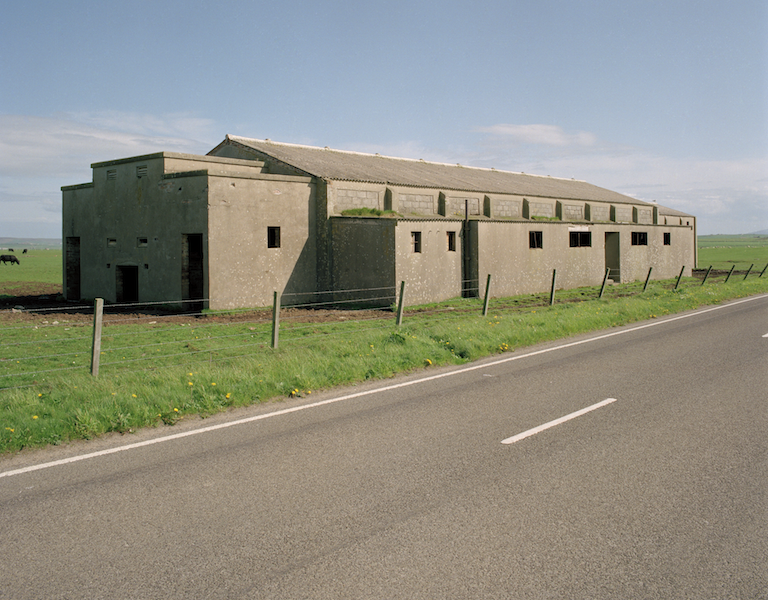
The gymnasium and cinema, viewed from the north-west, 29 May 1996. © Crown Copyright: Historic Environment Scotland. Licensor canmore.org.uk
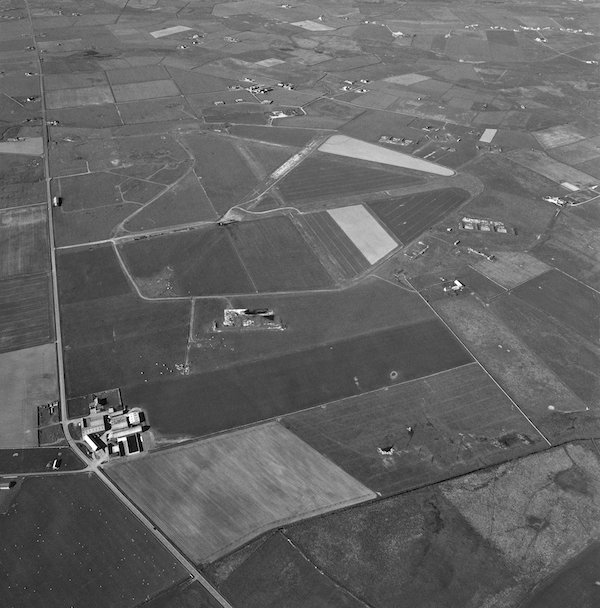
Aerial view of Skeabrae, taken from the south, 4 June 1997. © Crown Copyright: Historic Environment Scotland. Licensor canmore.org.uk

View of the inside of a blast wall at Skeabrae from the west, 25 August 1997. © Crown Copyright: Historic Environment Scotland. Licensor canmore.org.uk
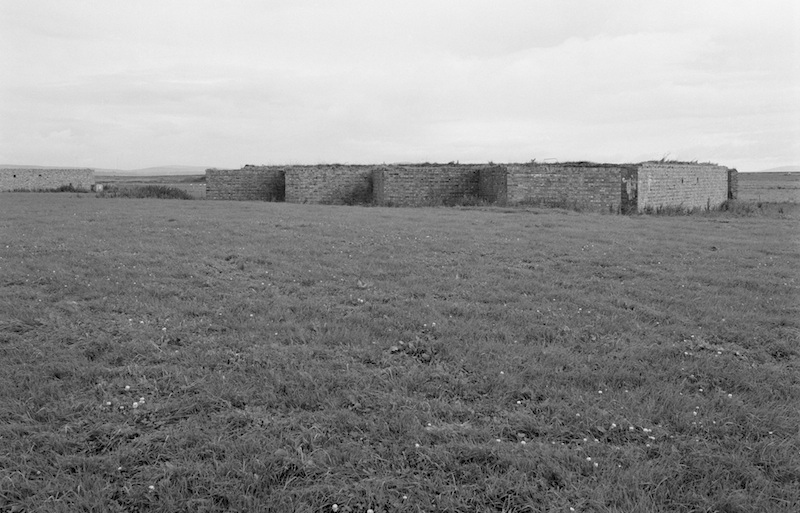
View of ammunition stores at Skeabrae from the north-west, 25 August 1997. © Crown Copyright: Historic Environment Scotland. Licensor canmore.org.uk
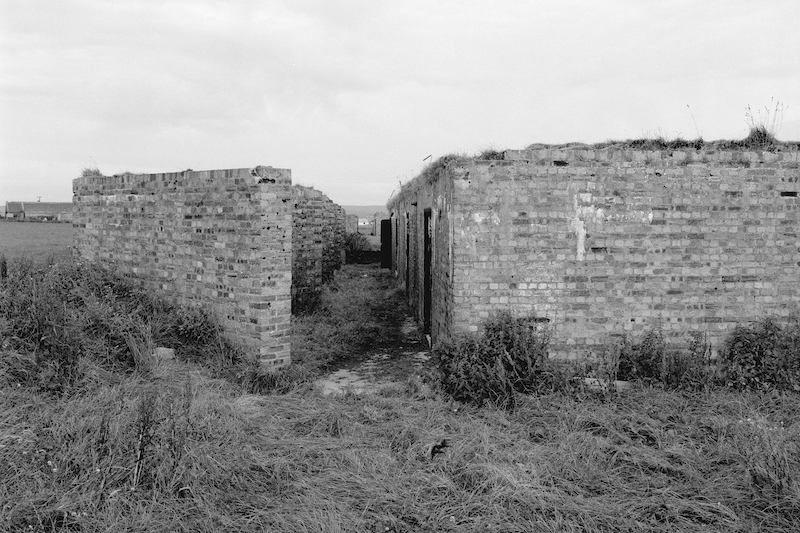
The view along the blast corridor between a blast wall and an ammunition store, 25 August 1997. © Crown Copyright: Historic Environment Scotland. Licensor canmore.org.uk
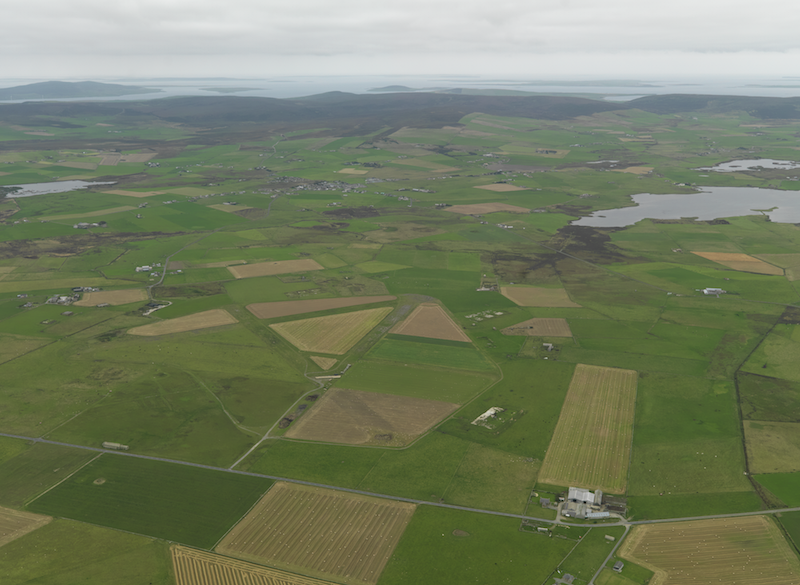
Aerial view centred on Skeabrae airfield taken from the west-south-west, 24 September 2008. © Crown Copyright: Historic Environment Scotland. Licensor canmore.org.uk

Aerial view centred on Skeabrae airfield taken from the south-south-west, 24 September 2008. © Crown Copyright: Historic Environment Scotland. Licensor canmore.org.uk
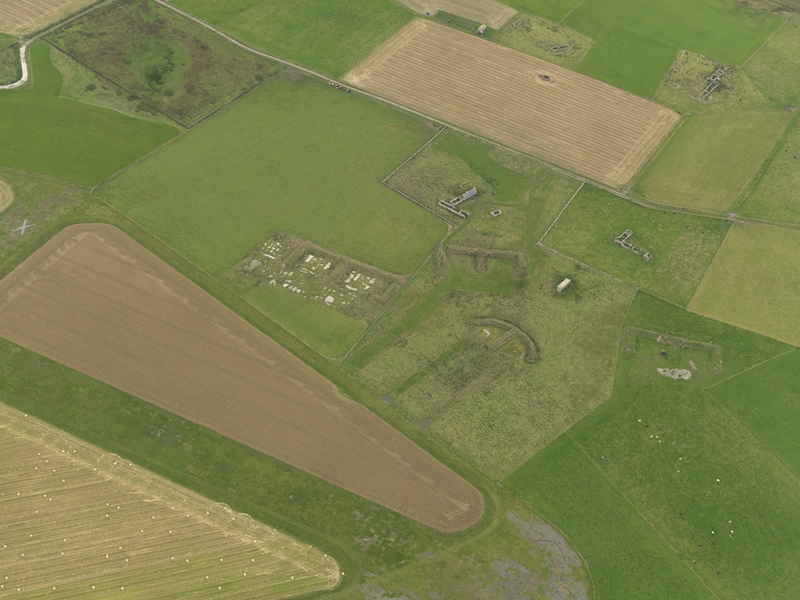
Aerial view centred on the dispersal area of Skeabrae airfield, taken from the west, 24 September 2008. © Crown Copyright: Historic Environment Scotland. Licensor canmore.org.uk
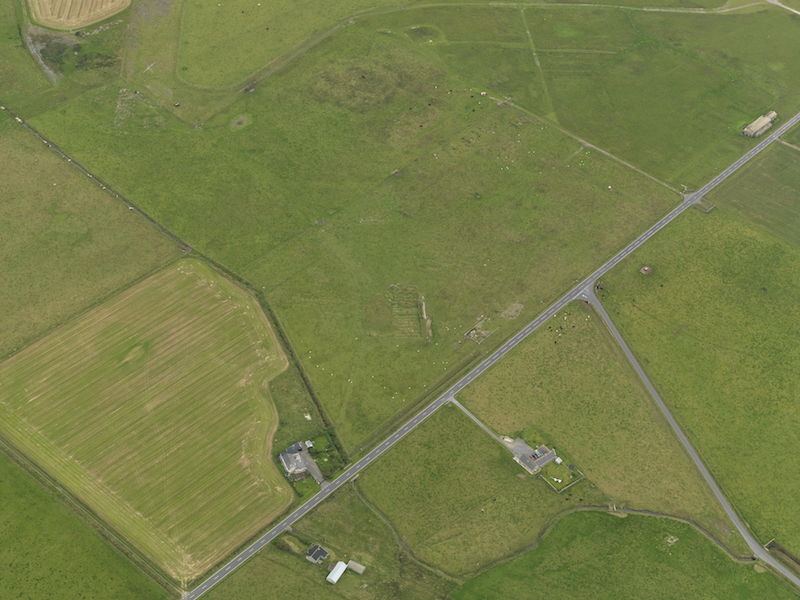
Aerial view centred on the north-west dispersal area of Skeabrae airfield, taken from the north-west, 24 September 2008. © Crown Copyright: Historic Environment Scotland. Licensor canmore.org.uk
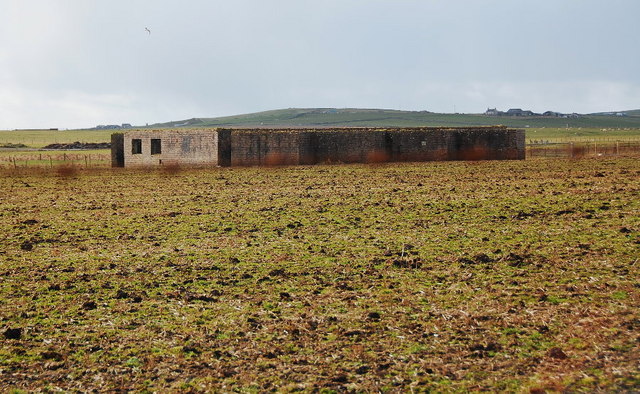
One of the remaining buildings at Skeabrae. © Ian Balcombe and licensed for reuse under this Creative Commons Licence

One of the entrances to Skeabrae, 23 March 2009. © Ian Balcombe and licensed for reuse under this Creative Commons Licence
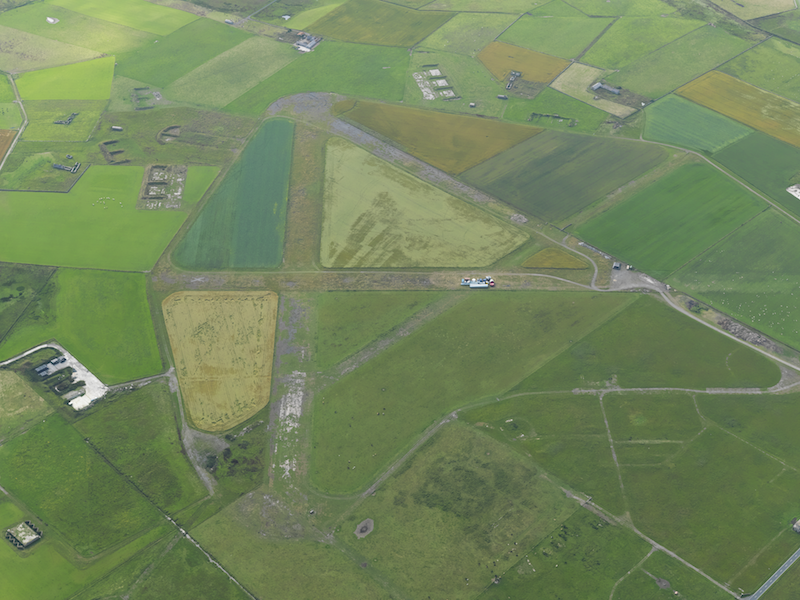
Aerial view of Skeabrae from the north-west, 6 August 2009. © Crown Copyright: Historic Environment Scotland. Licensor canmore.org.uk
Aerial footage of Skeabrae, c. 2011. Courtesy of Andrew Brown
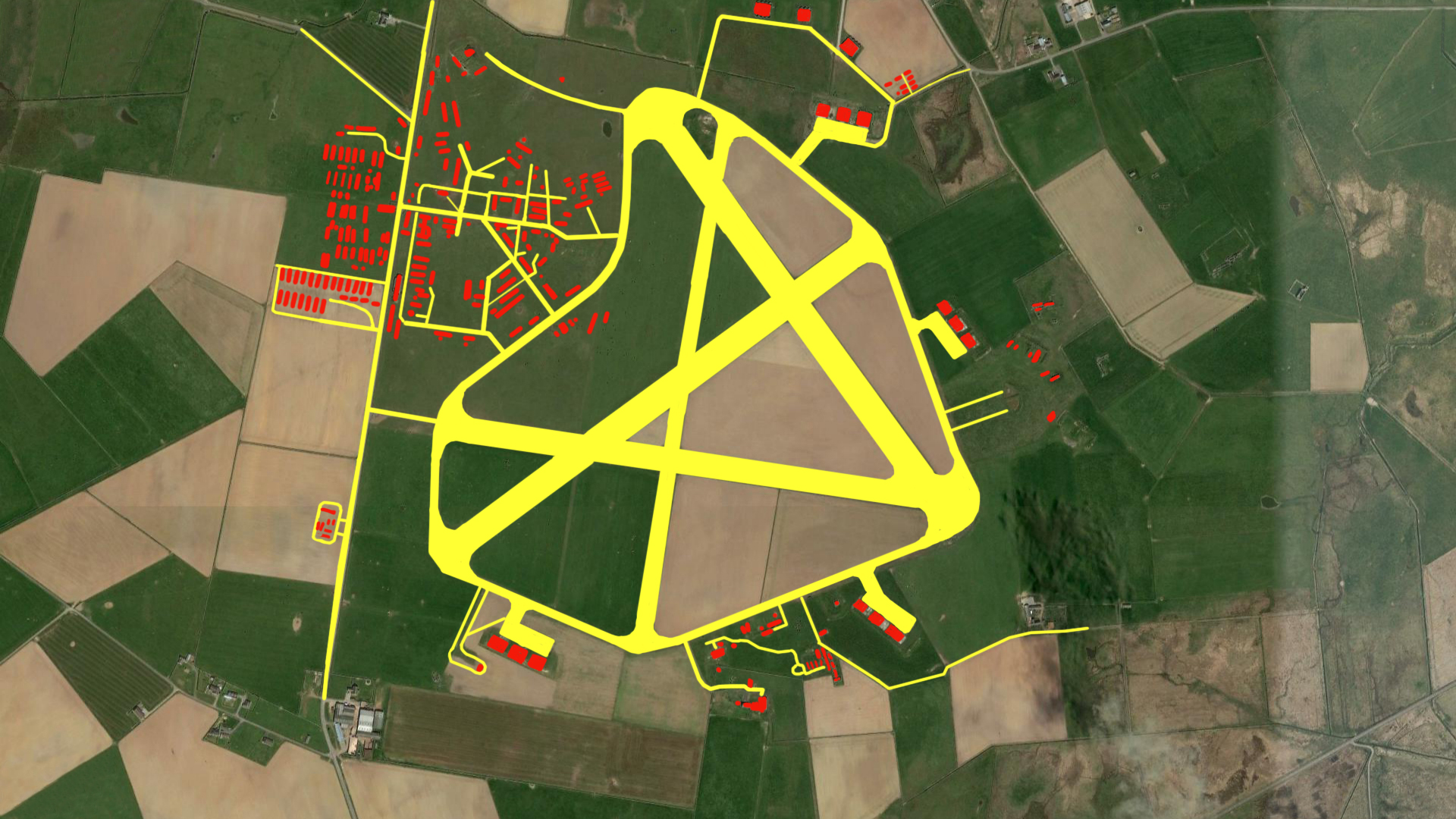
Key
Red = Buildings
Yellow = Roads and Runways
